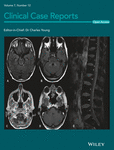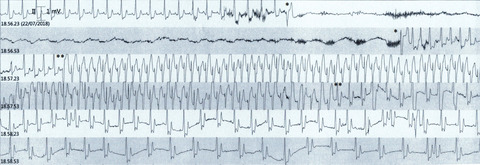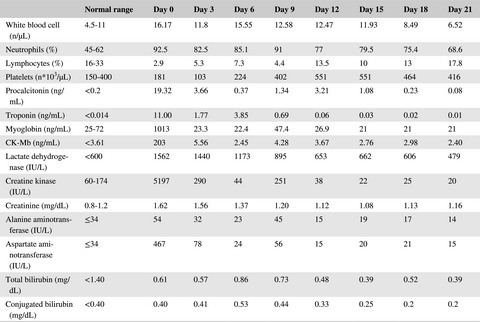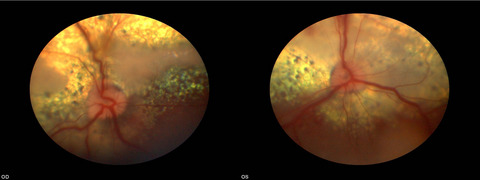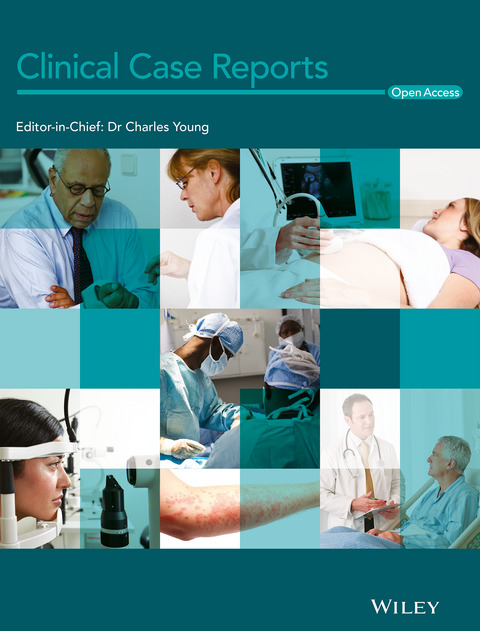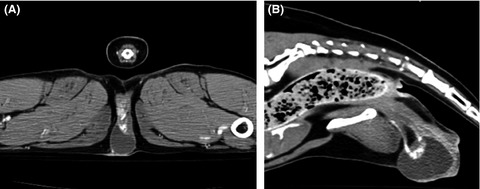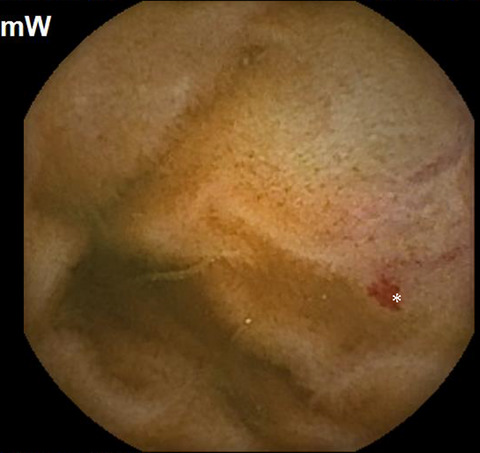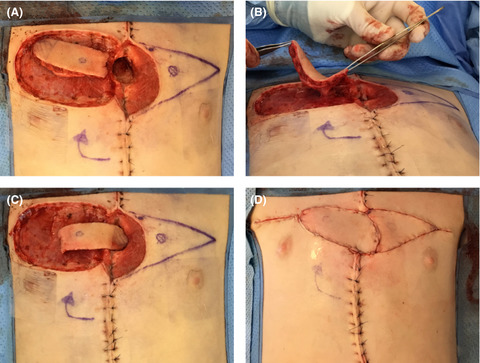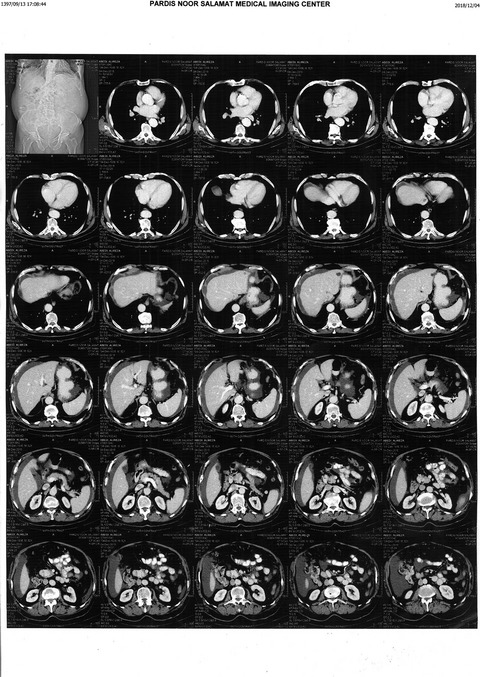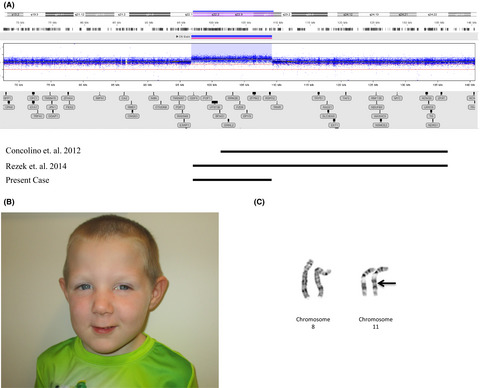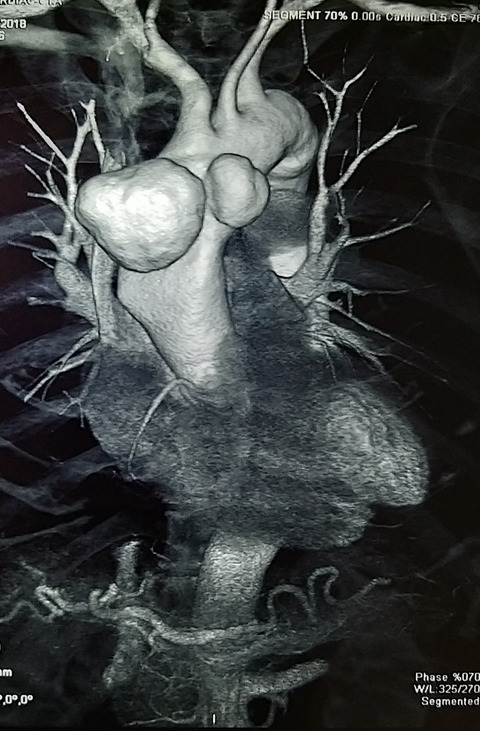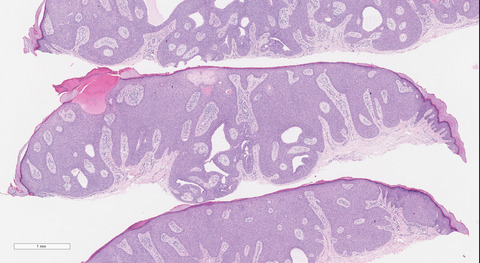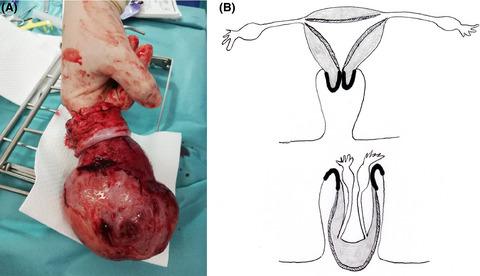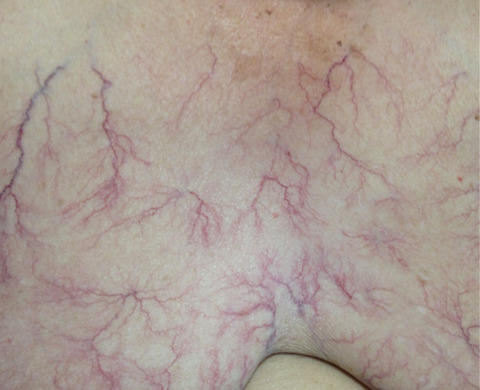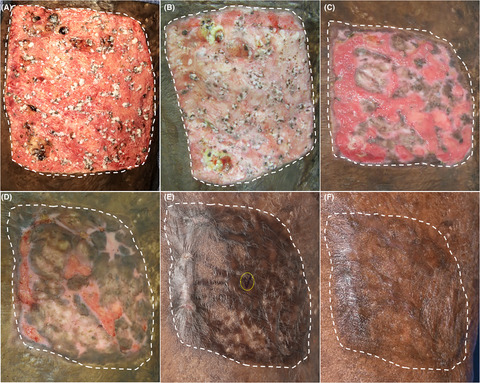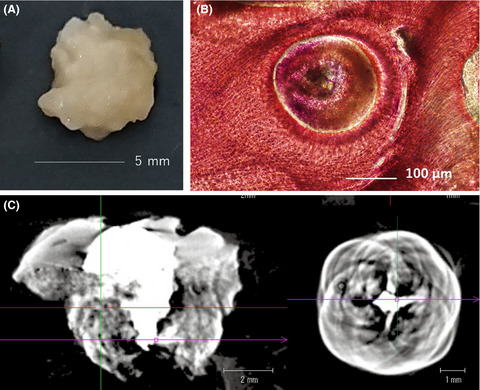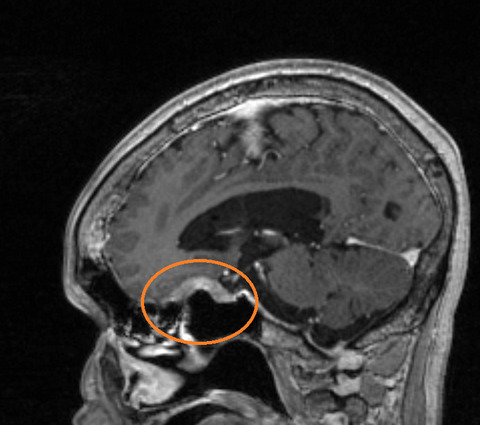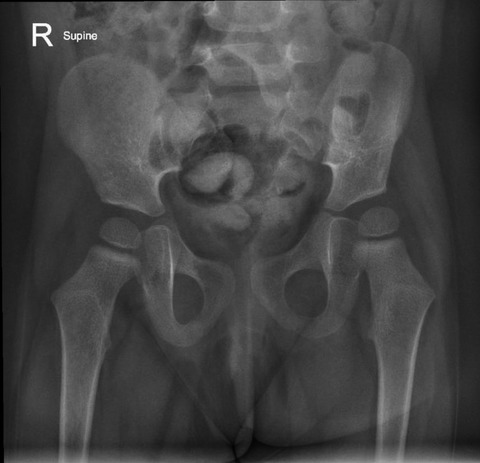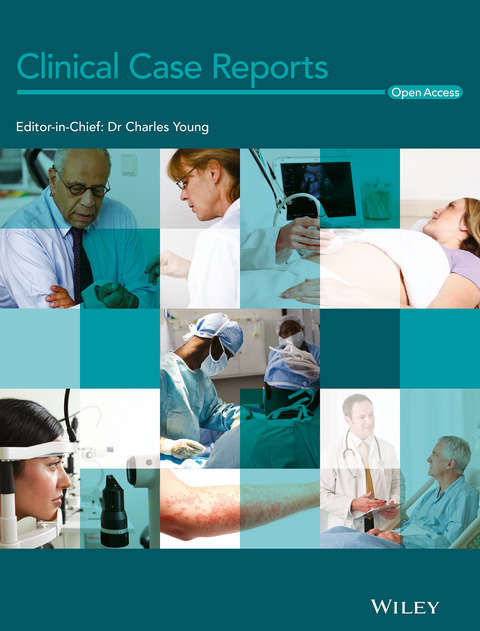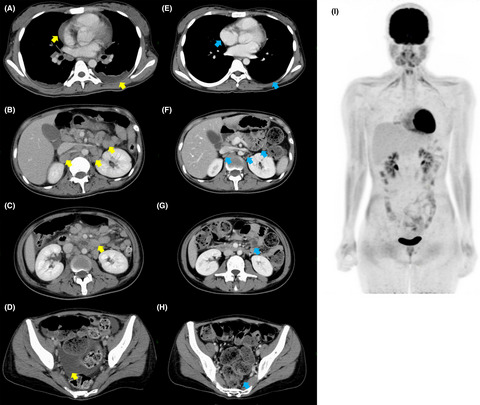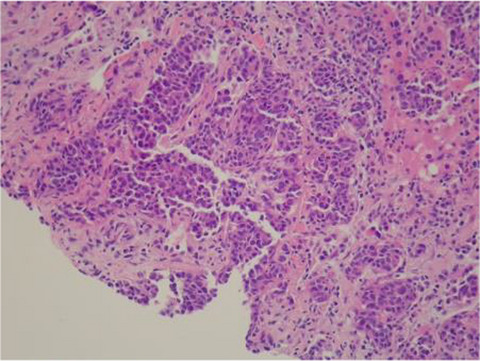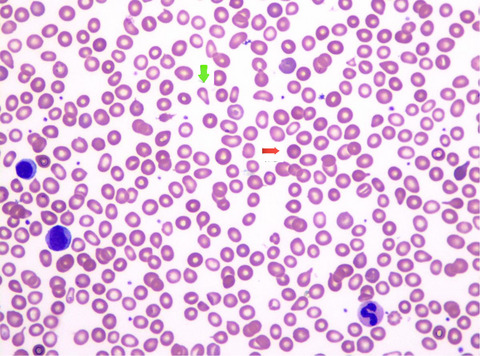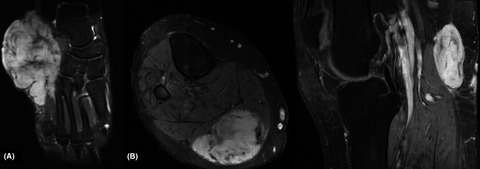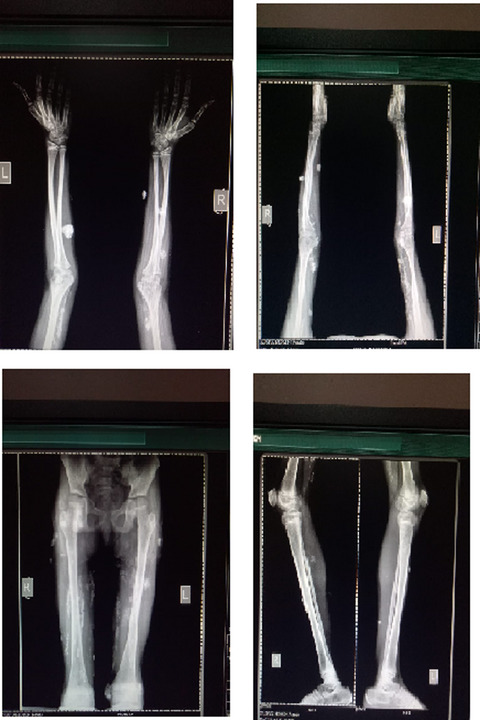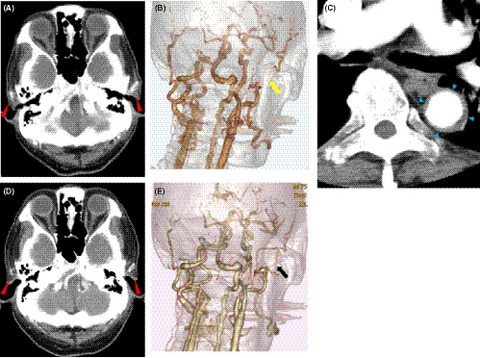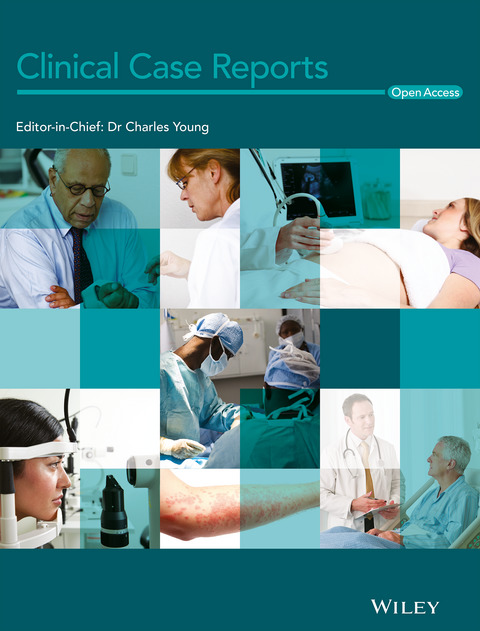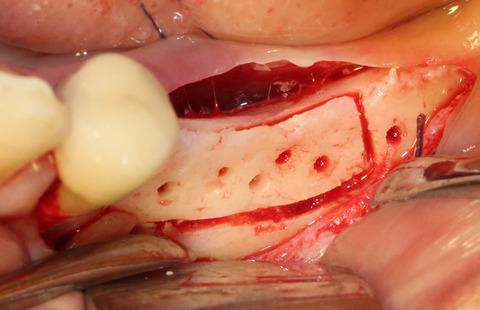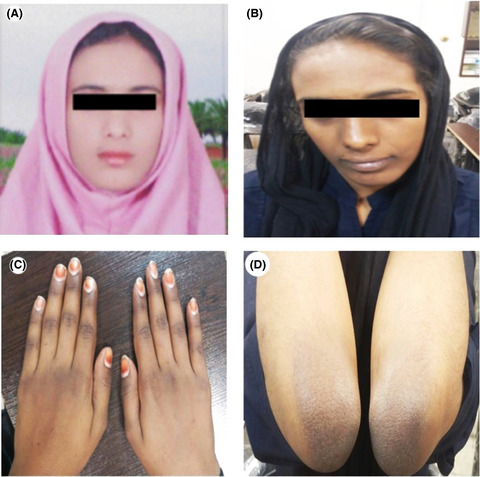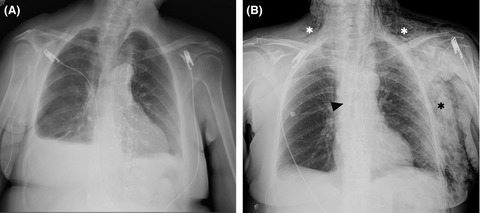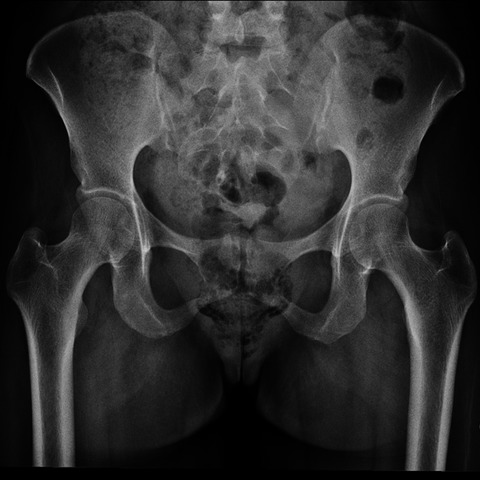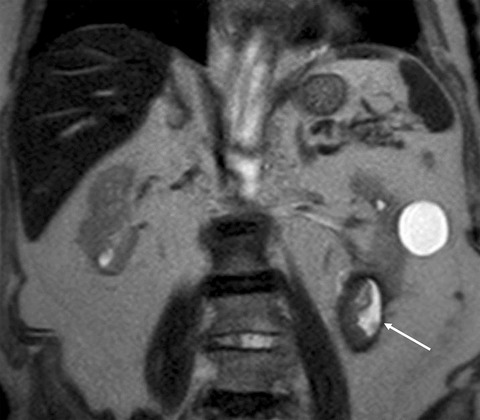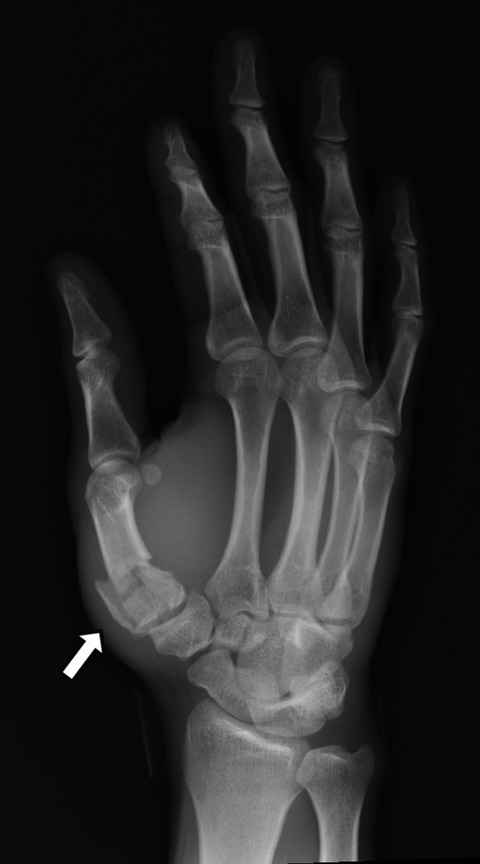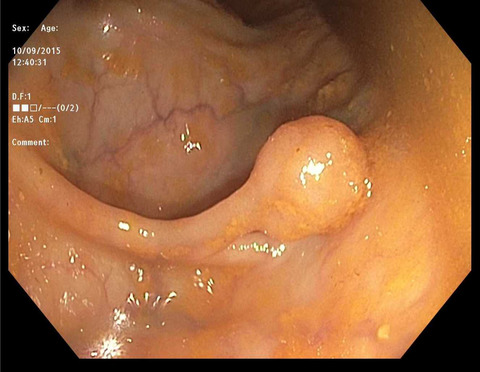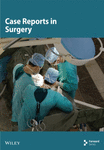Journal list menu
Export Citations
Download PDFs
FRONT COVER
Front Cover
- Page: i
- First Published: 29 December 2019
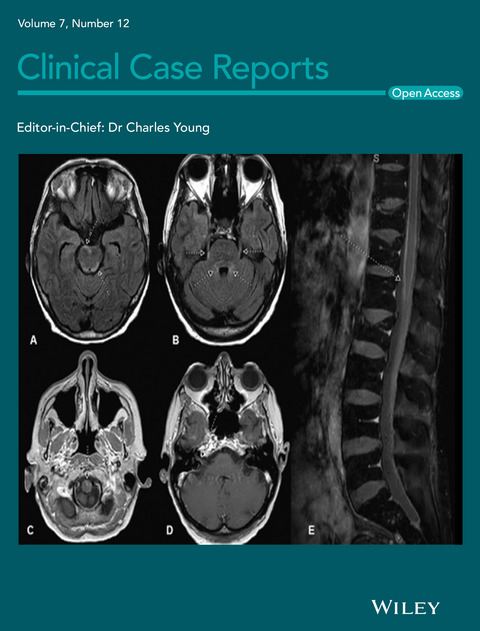
The cover image is based on the Case Report Cauda Equina Syndrome in an Ovarian Malignant-Mixed Müllerian Tumor with Leptomeningeal Spread by Joshua Bernstock, Gustavo Chagoya, Andrew Janssen et al., https://doi.org/10.1002/ccr3.2472
INSIDE FRONT COVER
Inside Front Cover
- Page: ii
- First Published: 29 December 2019
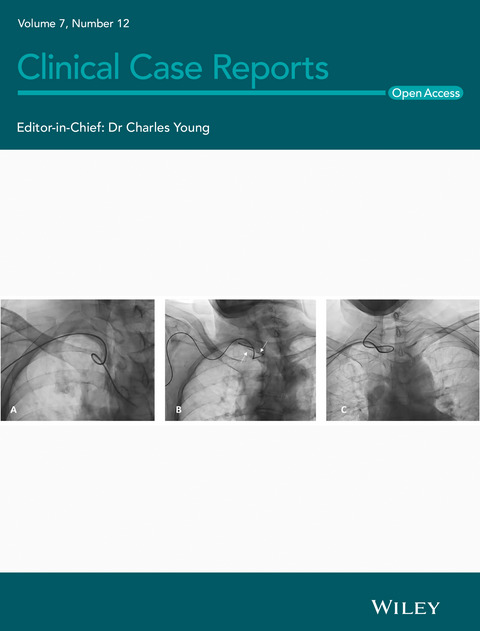
The cover image is based on the Case Report Knot My Problem: Overcoming Transradial Catheter Complications by Melanie Walker, Michael Levitt, and Basavaraj Ghodke https://doi.org/10.1002/ccr3.2537
ISSUE INFORMATION
CASE REPORTS
A case of modern management of Morgagni-Adam-Stokes syndrome
- Pages: 2295-2299
- First Published: 30 September 2019
Invasive mole in a perimenopausal woman with lung and vaginal metastases: A case report
- Pages: 2300-2305
- First Published: 30 September 2019

Gestational trophoblastic disease can result in serious complications and disease progression. Therefore, follow-up of such patients is essential for early detection of malignant trophoblastic tumors and to reduce mortality rate. Primary treatment is chemotherapy but hysterectomy should be considered in patients who have uncontrollable hemorrhage and hemodynamic instability.
Should clinical suspicion shift to ampicillin resistance organisms in certain preterm premature rupture of membranes scenarios?: Case of early-onset sepsis caused by E coli
- Pages: 2306-2310
- First Published: 30 September 2019
Homozygous 15q13.3 microdeletion in a child with hypotonia and impaired vision: A new report and review of the literature
- Pages: 2311-2315
- First Published: 30 September 2019

Although there are numerous reports of heterozygous 15q13.3 microdeletion, homozygous 15q13.3 microdeletion is rare. We report a new patient with homozygous microdeletion of 15q13.2q13.3 and review the previous literature reports. Common clinical features include encephalopathy, hypotonia, developmental delay, cortical vision impairment, optic nerve abnormality, epilepsy, and abnormal EEG findings.
Craniocerebral metastases from a supraglottic squamous cell carcinoma: A case report and literature review
- Pages: 2316-2320
- First Published: 02 October 2019
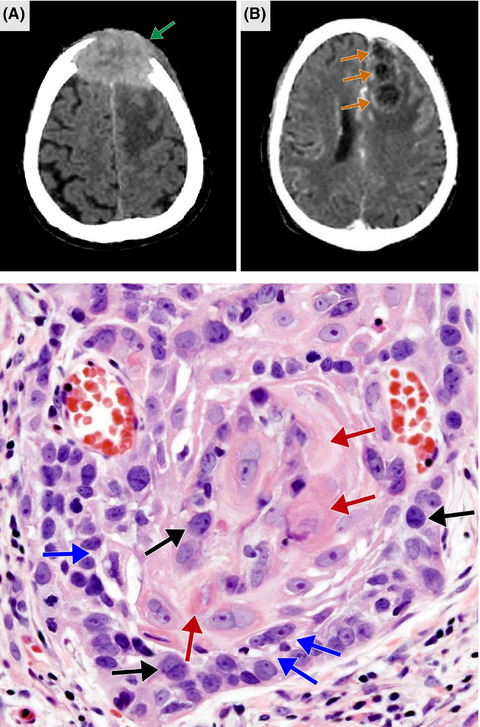
Craniocerebral metastases as the initial spread of supraglottic squamous cell carcinoma (SCC) are exceptional. The presence of several months' history of dysphagia, dyspnea, cachexia, tobacco/alcohol abuse, and seizure(s) is suspicious of craniocerebral metastases from an advanced-stage supraglottic SCC. Physicians should be aware since early diagnosis, and treatment may increase patient survival.
Sporadic renal hemangioblastoma: A case report of a rare benign renal tumor
- Pages: 2321-2326
- First Published: 07 October 2019

In renal tumors, suspicious for renal cell carcinoma, where there is any doubt and discrepancy between morphology and immune profile, we recommend performing further immunohistochemical staining for pan-cytokeratin, S100, NSE, and inhibin-alpha. Thus, follow-up overtreatment can be avoided in cases of benign kidney tumors.
Abdominal pain in the patient with antiphospholipid antibody syndrome: A case report
- Pages: 2327-2330
- First Published: 15 October 2019
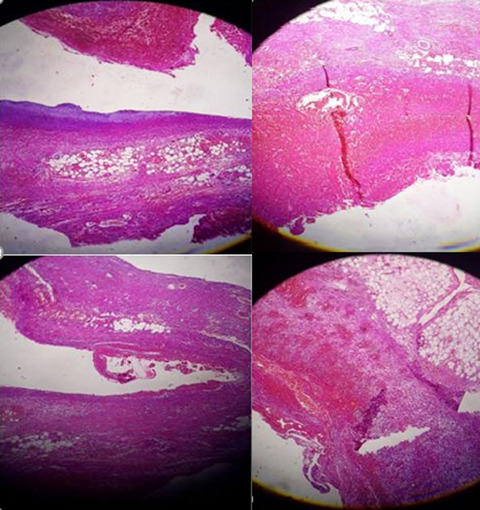
Antiphospholipid antibody syndrome (APS) is known to cause hypercoagulability, affecting a wide range of vessels, systematically. A 56-year-old woman was referred to our center with severe epigastric pain, with the history of APS. She was treated with packed cells, fresh frozen plasma and anticoagulation therapies.
Maxillary sinus floor augmentation and simultaneous dental implant placement in a patient with Guillain-Barre syndrome: A case report
- Pages: 2331-2335
- First Published: 17 October 2019
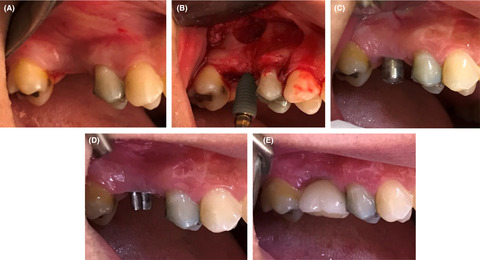
Dental implant placement in patients with Guillain-Barre syndrome could be accomplished, and it may turn into a successful treatment for edentulous sites and functionally stabilized for long life. However, a proper patient selection, accurate medical consultation with physician, atraumatic surgery, and other important cautions should be considered.
Severe myocarditis due to influenza A(H1N1)pdm09 viral infection in a young woman successfully treated with intravenous zanamivir: A case report
- Pages: 2336-2340
- First Published: 21 October 2019
Cauda equina syndrome in an ovarian malignant-mixed müllerian tumor with leptomeningeal spread
- Pages: 2341-2345
- First Published: 22 October 2019
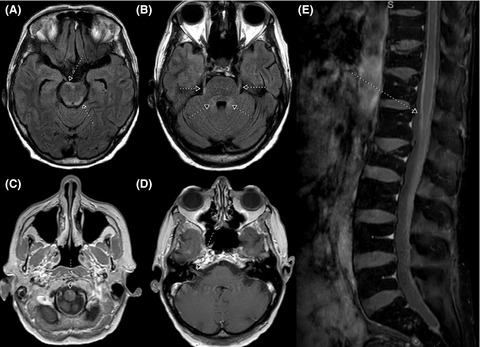
Leptomeningeal metastasis is extremely rare in patients with ovarian cancer, but should be considered in patients presenting with neurologic deficits such as cauda equine syndrome. Given its poor prognosis and lack of data currently on management, additional studies are needed to optimize treatment regimens and improve outcomes.
Breast tuberculosis: A case report of primary type mammary tuberculosis
- Pages: 2346-2348
- First Published: 23 October 2019
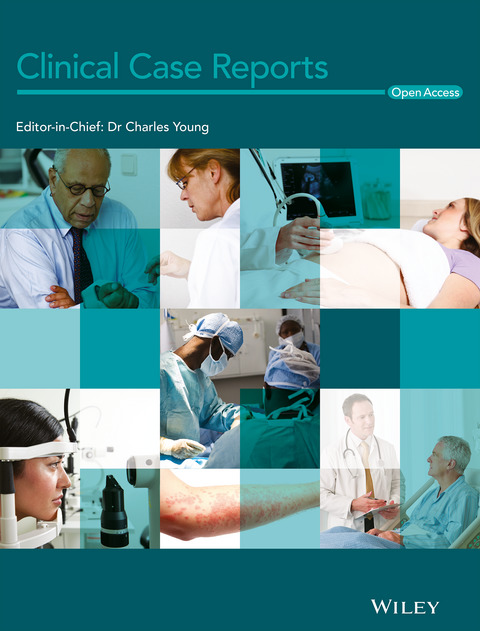
Mammary tuberculosis is exceptional in developed countries. It can mimic an abscess or a granulomatous mastitis. In subjects coming from endemic areas, it is necessary to suspect a tuberculosis infection in case of recurrent mastitis refractory to antibiotics. Positivity of Quantiferon-TB Gold assay can help to confirm the clinical suspicion.
Cryptococcosis with ocular and central nervous system involvement in a 3-year-old dog
- Pages: 2349-2354
- First Published: 23 October 2019
A novel detrimental homozygous mutation in the WFS1 gene in two sisters from nonconsanguineous parents with untreated diabetes insipidus
- Pages: 2355-2357
- First Published: 23 October 2019
Thalidomide for the treatment of angiodysplasia-related recurrent gastrointestinal hemorrhage: Is low dose a safe and viable option?
- Pages: 2363-2367
- First Published: 23 October 2019
Atrial fibrillation: A never ending story?
- Pages: 2368-2370
- First Published: 24 October 2019
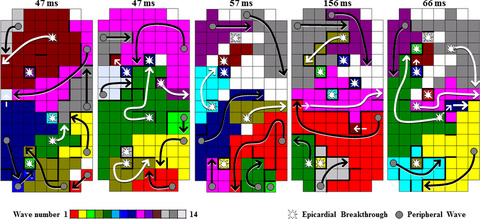
Conduction patterns during therapy-resistant atrial fibrillation (AF) are highly dissociated and show long lines of conduction block. As long as the presence and extensiveness of the arrhythmogenic substrate underlying AF remains poorly understood and cannot be evaluated in the individual patient, none of the present available antiarrhythmic treatment modalities will be effective.
Reconstruction of a deep sternal wound with exposed pericardium using an IMAP propeller flap: A case report
- Pages: 2371-2374
- First Published: 24 October 2019
A case of gastrointestinal tuberculosis with unusual manifestations of carcinomatosis
- Pages: 2375-2378
- First Published: 24 October 2019
Long-term survival of an advanced colorectal cancer patient treated with Regorafenib: Case report and literature review
- Pages: 2379-2383
- First Published: 24 October 2019
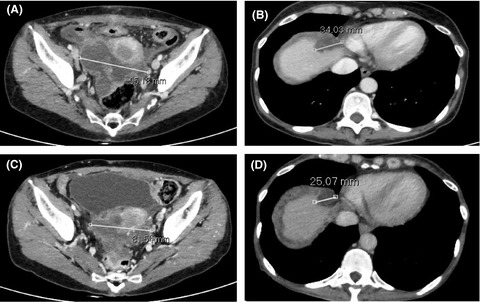
Two phase 3 trials reported a prolonged survival in the third-line setting of colorectal cancer patients treated with regorafenib with the longest duration of treatment of 16 months. Herein, we reported a unique case of a patient refractory to conventional chemotherapy who showed a prolonged stable disease with regorafenib.
Metastatic ductal adenocarcinoma of the breast presenting with pericardial effusion—Challenges in the diagnosis of breast cancer
- Pages: 2384-2387
- First Published: 24 October 2019
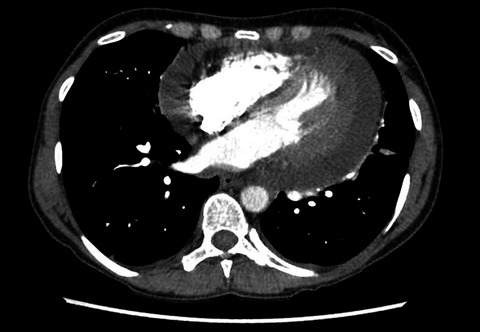
Breast cancer is a common entity that can be difficult to diagnose. This case demonstrates the limitations of breast cancer diagnostics. Particularly, how the available imaging techniques and even biopsy can potentially miss a malignancy. It exemplifies the role immunohistochemistry staining plays in the diagnosis of cancers of unclear origin.
Multicentric Castleman disease with TAFRO syndrome and Sjögren's
- Pages: 2388-2392
- First Published: 24 October 2019
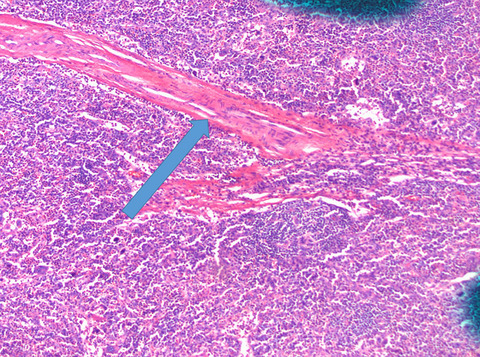
We describe a patient with Castleman's disease with TAFRO syndrome and concurrent Sjögren's syndrome and investigate whether the autoimmune process may have accelerated the onset of her Castleman's disease. Treated with R-CVP therapy with remission of symptoms although there is no current standard treatment.
Interstitial duplication of 8q22.1-q23.1- A case report and review of the literature
- Pages: 2393-2397
- First Published: 24 October 2019
Intramuscular myxoma of the deltoid muscle in a swimmer: A rare case report and literature review
- Pages: 2398-2401
- First Published: 27 October 2019
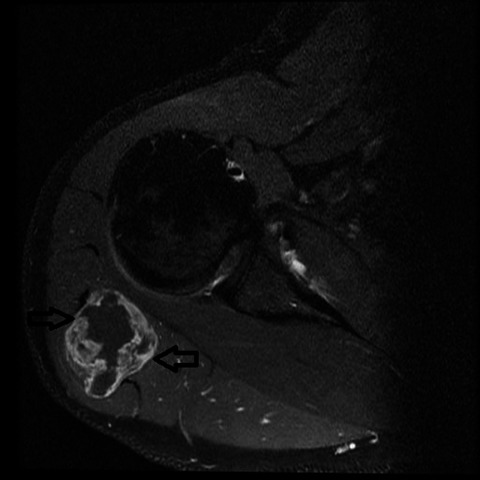
Intramuscular myxoma (IM) is a rare mesenchymal neoplasm with the incidence of one per 1 000 000 people and is reported greater among women. Our case reports an IM of a deltoid muscle in a young man. Differential diagnosis with sarcoma is important. Surgery is the treatment of choice usually without recurrence.
Dissected saccular aneurysms of the ascending aorta
- Pages: 2402-2404
- First Published: 27 October 2019
Primary cutaneous CD4-positive small/medium T-cell lymphoproliferative disorder: The first-reported Latin-American case with response to doxycycline
- Pages: 2405-2409
- First Published: 29 October 2019
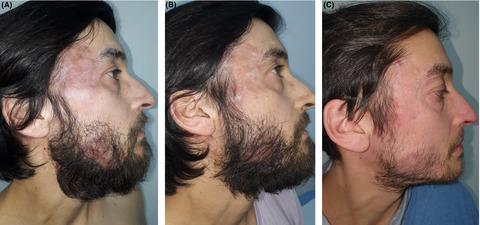
Primary cutaneous CD4+ small/medium T-cell lymphoproliferative disorder is a provisional entity according to the last WHO-EORTC classification. The treatment of choice has not yet been defined. Local therapies have been used with variable response. Doxycycline as a main treatment option is a potential low-cost and effective alternative for this disorder.
Filling in the gaps: Implantable bronchial valves in pediatric patients with persistent leaks
- Pages: 2410-2413
- First Published: 31 October 2019
A case of pediatric rosacea—Skin and ocular involvement
- Pages: 2414-2416
- First Published: 01 November 2019
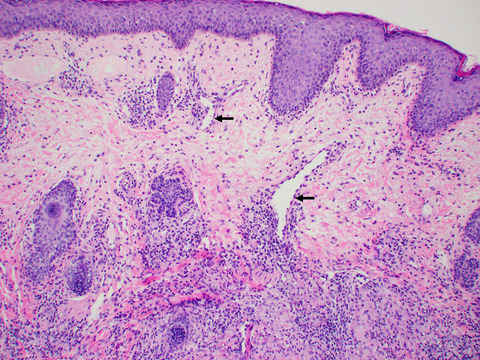
Childhood rosacea presents a diagnostic difficulty due to the lack of diagnostic criteria and potential mimics. Ocular involvement is a frequent complication of rosacea in children and may appear before cutaneous findings. It is important for clinicians to be aware of these and to screen patients appropriately in order for timely treatment to be instituted.
Poroma: A case report of pulsatile papule visualized on dermoscopy
- Pages: 2417-2419
- First Published: 05 November 2019
Nonpuerperal uterine inversion due to adenomyosis: A case report and a literature review
- Pages: 2420-2424
- First Published: 05 November 2019
A hidden face of migration: Diabetic ketoacidosis in a severely malnourished refugee
- Pages: 2425-2428
- First Published: 06 November 2019
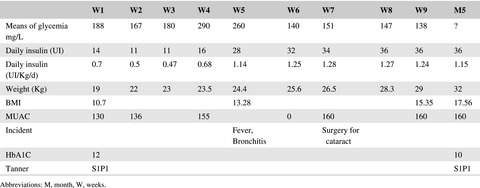
Besides violence, the risk of under nutrition and infection, migrant children with noncommunicable chronic diseases face serious challenges in the management of their conditions. Management of diabetic ketoacidosis in a severely malnourished patient includes careful hydration, therapeutic feeding, and monitoring
Progressive edemas and generalized telangiectasia: A presentation of Intravascular B-cell Lymphoma
- Pages: 2429-2432
- First Published: 06 November 2019
Ergometrine for postpartum hemorrhage and associated myocardial ischemia: Two case reports and a review of the literature
- Pages: 2433-2442
- First Published: 06 November 2019
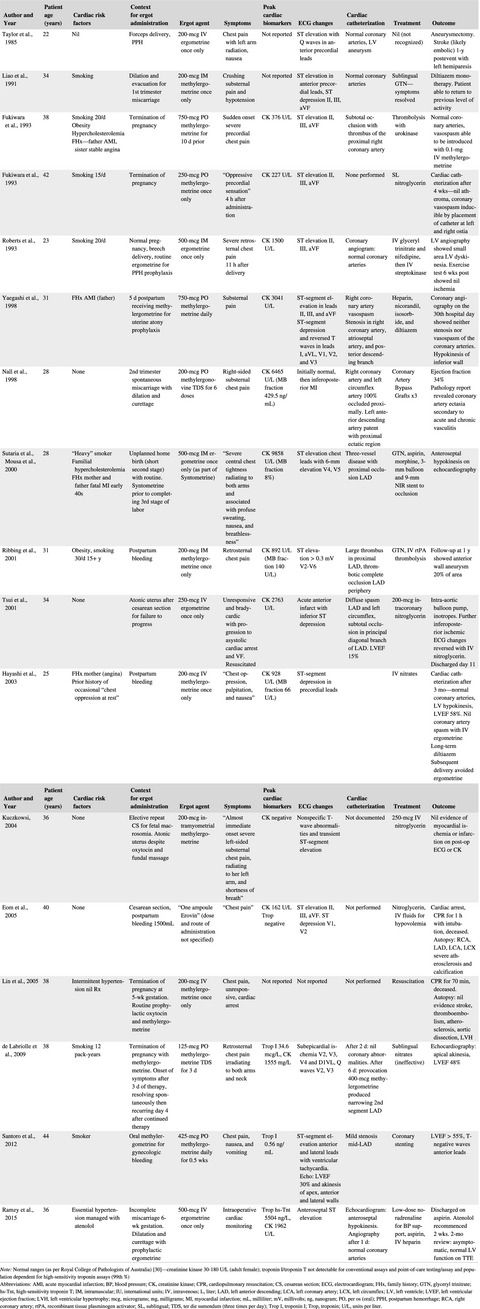
Ergometrine is recommended for use in the medical treatment of postpartum hemorrhage. Ergometrine can occasionally precipitate myocardial ischemia in the setting of significant anemia in women without preexisting cardiac risk factors, and it is important to recognize and treat myocardial ischemia in affected patients to prevent severe complications.
An intubated 7-month-old infant with a retropharyngeal abscess and multidrug-resistant Streptococcus mitis
- Pages: 2443-2448
- First Published: 06 November 2019
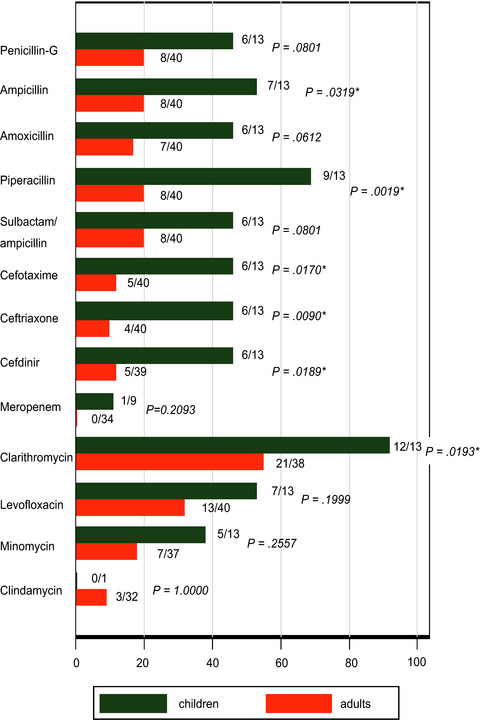
The profile of antimicrobial resistance (ie, antibiogram) may be disparate between children and adults. An infant developed severe deep neck infection with a multidrug-resistant microbe. The microbe was more drug-resistant in children than in adults, in our hospital. Treatment of a child should be guided by the antibiogram obtained from children.
Regeneration and expansion of autologous full-thickness skin through a self-propagating autologous skin graft technology
- Pages: 2449-2455
- First Published: 06 November 2019
Considerations of psychotic symptomatology in anti-NMDA encephalitis: Similarity to cycloid psychosis
- Pages: 2456-2461
- First Published: 07 November 2019
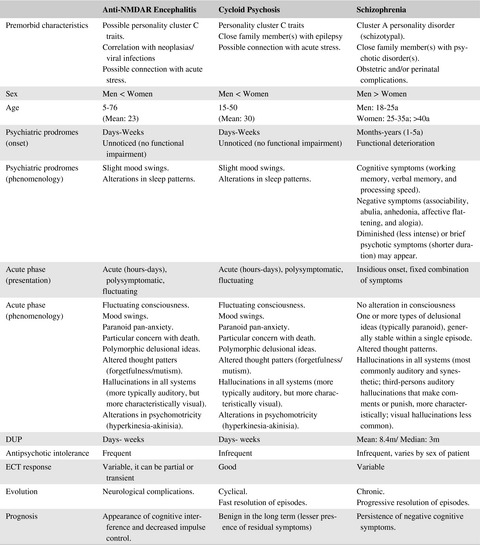
Clinical features that suggest that a first episode of psychosis is caused by autoimmune encephalitis include the following: (a) lack of long-term (cognitive and negative) psychiatric prodromes; (b) the presence of an atypical psychotic clinical profile; and (c) hypersensitivity to the side effect of antipsychotic medications.
Eruption disturbance caused by an odontoma that was partially attached to the crown of the adjacent maxillary first molar, and step lesion excavation for the tooth preservation: A case report
- Pages: 2462-2465
- First Published: 07 November 2019
Doxorubicin-associated takotsubo cardiomyopathy in a patient with adult T-cell leukemia/lymphoma
- Pages: 2466-2471
- First Published: 08 November 2019
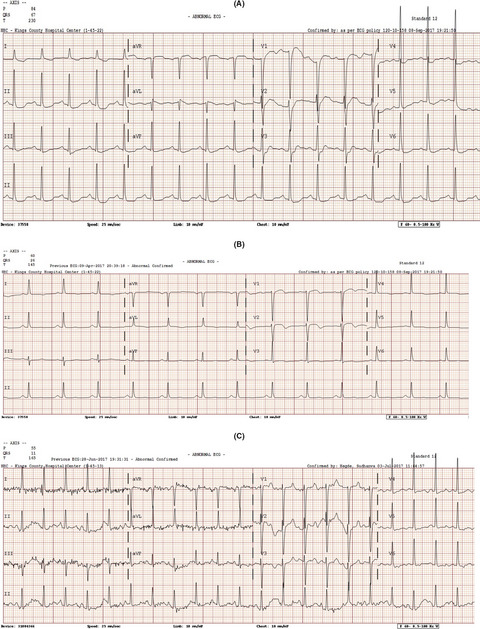
This case highlights the first reported association of doxorubicin with takotsubo cardiomyopathy (TC) presenting as cardiogenic shock during the first continuous infusion in a patient with adult T-cell leukemia/lymphoma. We aim to raise awareness to recognize and distinguish between irreversible doxorubicin-associated cardiomyopathy and reversible doxorubicin-associated TC in patients with cancer.
Neurosarcoidosis manifesting as panhypopituitarism
- Pages: 2472-2475
- First Published: 11 November 2019
Whole exome sequencing reveals a de novo missense variant in EEF1A2 in a Rett syndrome-like patient
- Pages: 2476-2482
- First Published: 12 November 2019
Recurrent soft tissue inflammation, necrotizing fascitis or Sweet syndrome, diagnostic dilemma
- Pages: 2483-2487
- First Published: 13 November 2019
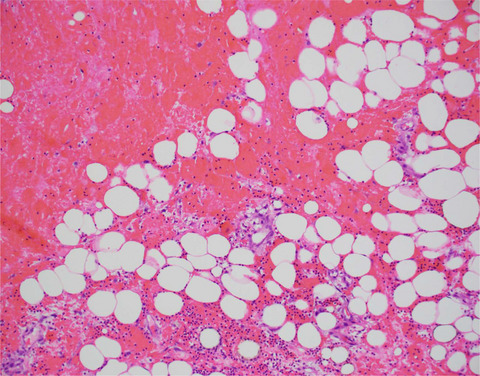
Necrotizing Sweet syndrome is a recently described entity that can pose significant challenges for management. Although necrotizing fasciitis can be rapidly fatal in the absence of prompt surgical management, necrotizing Sweet syndrome may actually be worsened by any surgical intervention. Authors want to emphasize and increase awareness of this rare presentation.
Pelvic Schwannoma: In light of a case report
- Pages: 2488-2490
- First Published: 13 November 2019
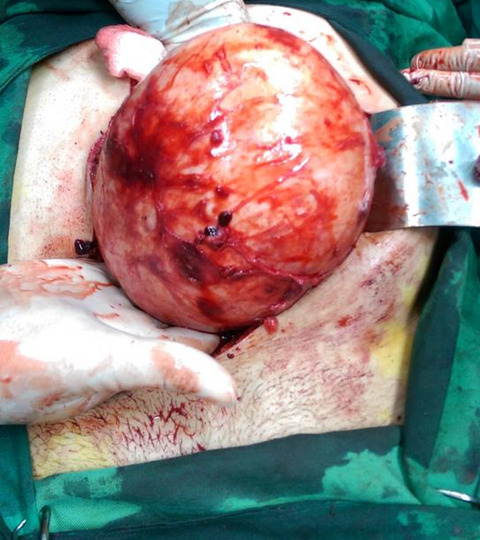
A 41-year-old man with abdominal enlargement, as a result of large retroperitoneal Schwannoma, was reported to our center. It was seen to have caused the displacement of the colon and was attached to the presacral region of the spine. Following the diagnosis, successful resection of Schwannoma was achieved.
Pityriasis rubra pilaris-like graft-vs-host disease following allogeneic stem cell transplant in two patients
- Pages: 2491-2494
- First Published: 14 November 2019
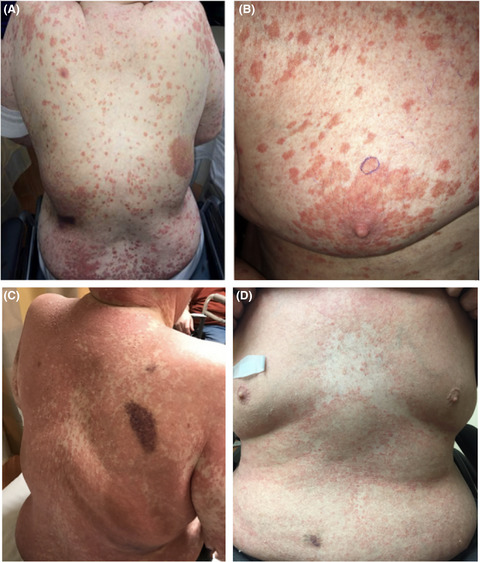
Chronic cutaneous graft-vs-host disease (GVHD) has several atypical variants. We describe two cases of GVHD with clinical and histopathologic features of pityriasis rubra pilaris (PRP), which responded to additional immunosuppression. Recognition of this newly described PRP-like clinical presentation of GVHD may prompt early consideration of additional steroid-sparing therapies.
Review of familial hemiplegic migraine, successful outcome in a pregnant patient
- Pages: 2495-2499
- First Published: 15 November 2019
Alectinib, an anaplastic lymphoma kinase (ALK) inhibitor, as a bridge to allogeneic stem cell transplantation in a patient with ALK-positive anaplastic large-cell lymphoma refractory to chemotherapy and brentuximab vedotin
- Pages: 2500-2504
- First Published: 15 November 2019
Applying sinus node function testing to evaluate perioperative management for patients suffering from tachycardia-bradycardia syndrome before atrial fibrillation ablation
- Pages: 2505-2507
- First Published: 17 November 2019

Sinus node (SN) function is an important prognostic factor of atrial fibrillation (AF). However, AF ablation guideline has not recommended SN function test before ablation. SN function testing before AF ablation in patients with tachycardia-bradycardia syndrome should be beneficial to determine further therapy strategies and prognosis.
Head and neck neuroendocrine tumors at a single institution over 15 years
- Pages: 2508-2512
- First Published: 17 November 2019
Systemic lupus erythematosus presenting as Evans syndrome
- Pages: 2513-2514
- First Published: 18 November 2019
Development of multifocal extra-abdominal desmoid fibromatosis after surgical resection
- Pages: 2515-2519
- First Published: 18 November 2019
Selective interstitial doxorubicin for recurrent glioblastoma
- Pages: 2520-2525
- First Published: 19 November 2019
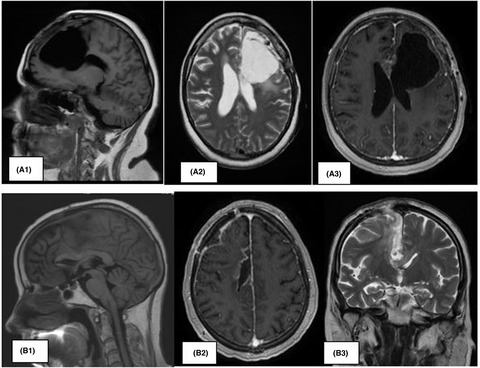
Poor delimitation from the viable brain, great genetic heterogeneity, lack of tumor vascularisation are factors that preclude intravenous chemotherapy. Interstitial chemotherapy could be a strategy to avoid a blood-brain barrier and to assure a minimal dose concentration of the chemotherapy agent. Doxorubicin might be devoid of neurotoxic effects and still efficient on remaining far-infiltrated tumor cells.
Heterotopic ossification in a 7-year-old female patient treated with individualized homeopathy: A case report
- Pages: 2526-2533
- First Published: 19 November 2019
A case of giant cell arteritis simultaneously diagnosed with chronic subdural hematoma
- Pages: 2534-2538
- First Published: 20 November 2019
An excellent response to tofacitinib in a Brazilian adolescent patient with alopecia areata: A case report and a review of the literature
- Pages: 2539-2542
- First Published: 21 November 2019
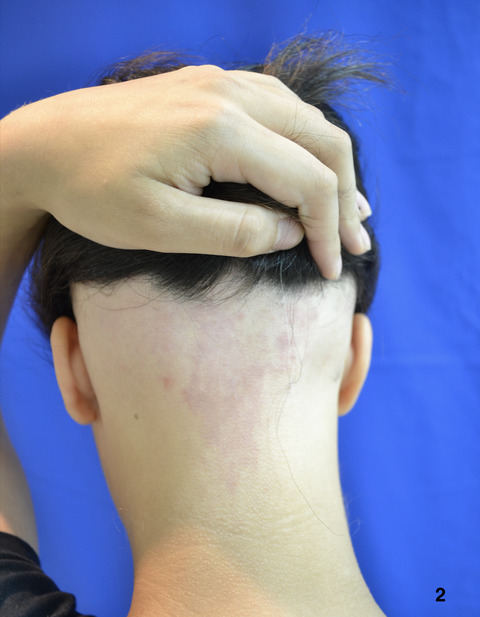
Alopecia areata is a common autoimmune disease, with a negative impact in health-related quality of life, especially when affecting children and adolescents. Current medical therapies, mainly for severe disease, are not effective (Semin Cut Med Surg, 2015; 34:72). There are no FDA (Food and Drug Administration)- or ANVISA (Agência Nacional de Vigilância Sanitária)-approved therapy for children with alopecia areata. JAK inhibitors are emerging as a promising therapy.
Thrombocytopenia: A possible side effect of apixaban
- Pages: 2543-2544
- First Published: 21 November 2019
Sheathless guiding catheter from a femoral approach for complex percutaneous coronary interventions —An unusual solution for an often-encountered problem
- Pages: 2545-2547
- First Published: 22 November 2019
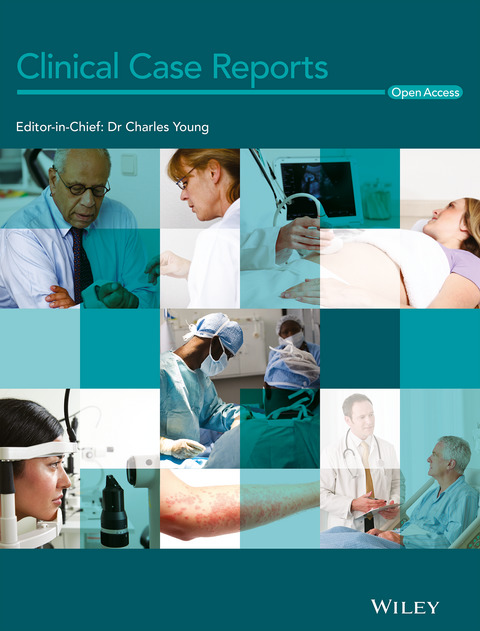
Sheathless guiding catheters are a valuable tool in the catheterization labor and may assist the operator when dealing with heavily calcified and tortuous vessels. Nevertheless, when hostile anatomy prevents successful PCI from the radial access, transfemoral use of sheathless guide can assist in overcoming these challenges in a safe manner.
Application of modified alveolar ridge augmentation technique for horizontal bone augmentation in posterior mandibular region: Report of 3 cases
- Pages: 2548-2564
- First Published: 22 November 2019
Rectal perforation after barium enema: A case report
- Pages: 2565-2567
- First Published: 22 November 2019

Colorectal perforation after barium enema it is a rare complication, but has a high mortality rate. With the emergence of endoscopic examinations, barium enemas have fallen into disuse and doctors are less aware of its complications. This case is of the utmost importance as failure to recognize it could be fatal.
Effective handling of substantial arterial air embolization during extracorporeal perfusion
- Pages: 2568-2570
- First Published: 24 November 2019
This report highlights the need for a coordinated approach to substantial arterial air embolization, considering the high risk of neurologic injury. Appropriate management may involve systemic hypothermia, hyperoxia, and retrograde cerebral perfusion.
A reversible case of rapidly progressive dementia—Hypercalcemia due to hyperparathyroidism
- Pages: 2571-2574
- First Published: 24 November 2019
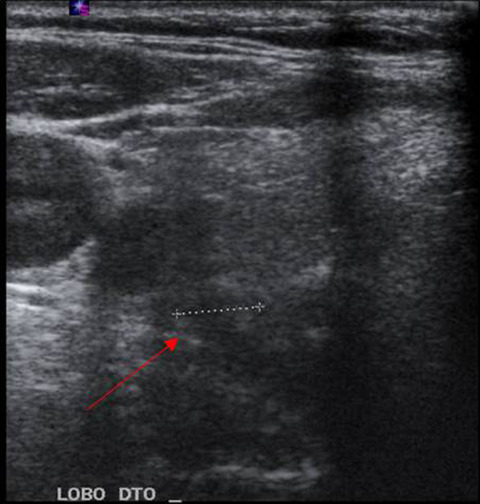
With an increasingly aging population, it is of extreme importance to exclude potentially reversible dementias, such as hyperparathyroidism with hypercalcemia, in the differential diagnosis of a rapidly progressive dementia. According to literature, this entity is undervalued and it is highly relevant to be aware of it.
CLINICAL IMAGE
Situs inversus Totalis: Always recall the uncommon
- Pages: 2575-2576
- First Published: 02 October 2019
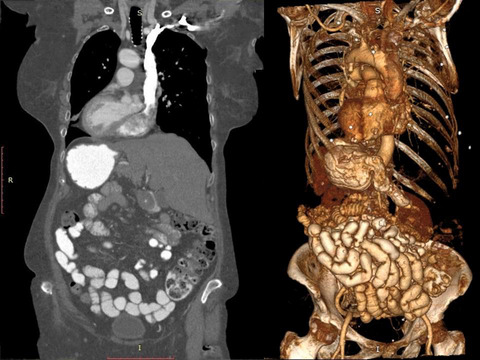
Situs inversus totalis has been reported as a rare entity. The detailed knowledge of the human structure and its anatomical variations is of great importance for the daily clinical practice and even more critical in emergency medicine. Such a condition may elude in routine patient evaluation or an urgent interventional procedure, with potentially fatal results.
Rotated mesiodens in children. An immediate surgical removal or active monitoring?
- Pages: 2577-2578
- First Published: 17 October 2019
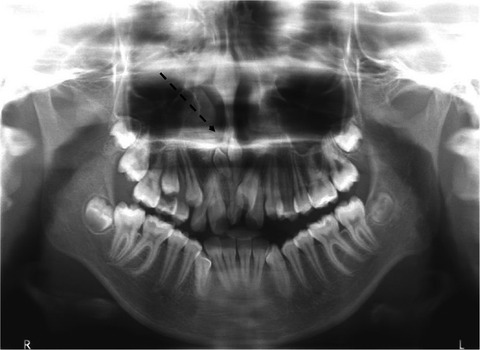
Rotated mesiodentes impaction is a rare variant of dental anatomy which may cause a cluster of symptoms damaging nearby structures. Although some recommend a delayed approach, after the end of teeth development, it seems that an immediate surgical removal would be of great benefit for the patients involved.
Sorafenib for relapsed FLT3-ITD-positive acute myeloid leukemia postallogeneic stem cell transplantation presenting as leukemia cutis
- Pages: 2579-2580
- First Published: 19 October 2019
How can someone’s entire skin change color?
- Pages: 2581-2582
- First Published: 24 October 2019
Isolated unilateral absence of the pulmonary artery
- Pages: 2583-2584
- First Published: 29 October 2019
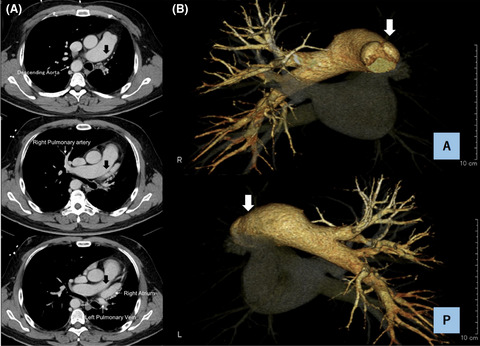
Isolated unilateral absence of the pulmonary artery (UAPA) is a rare malformation. It is associated with respiratory symptoms, such as dyspnea or hemoptysis. We suggest that surgical treatment should be positively considered in patients with UAPA who are severely symptomatic and who have no other cardiovascular or respiratory comorbidities.
Benign posterior mediastinal schwannoma—Multiple diagnostic imaging modalities
- Pages: 2585-2587
- First Published: 31 October 2019
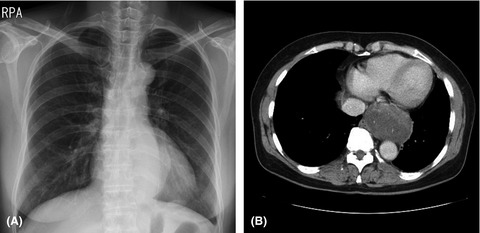
Schwannoma is usually benign, encapsulated spindle cell tumor which arises from schwann cells of nerve sheath, and is the most common of the neurogenic mediastinal tumors. Various imaging modalities can be applied to assess posterior mediastinal mass which is often found incidentally without symptom and frequently misdiagnosed for other benign conditions both clinically and radiologically in which clinicians should be aware of.
Delayed massive subcutaneous emphysema following Robicsek closure
- Pages: 2588-2589
- First Published: 03 November 2019
What you should know about emphysematous vaginitis?
- Pages: 2590-2591
- First Published: 06 November 2019
Severe acute pancreatitis with inflammation extending to the scrotum
- Pages: 2592-2593
- First Published: 06 November 2019
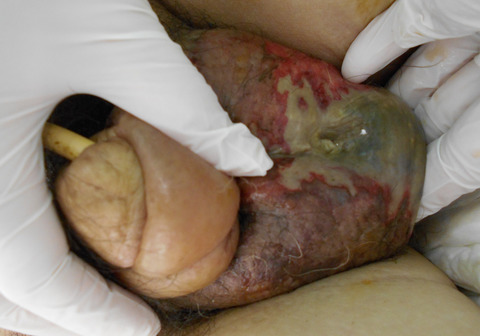
Extension of inflammation into the scrotum is rare in acute pancreatitis. If inflammation spreads in the scrotum, it may become severe. Clinicians should be aware of this condition as a possible complication. Proactive imaging testing is recommended when complaining of cyst swelling or testicular pain.
Spontaneous pneumomediastinum and subcutaneous emphysema in avian influenza A (H5N6) human pneumonia
- Pages: 2594-2595
- First Published: 11 November 2019
Knot my problem: Overcoming transradial catheter complications
- Pages: 2596-2597
- First Published: 12 November 2019
How much liver does a person need?
- Pages: 2598-2599
- First Published: 18 November 2019
Spontaneous reduction of a minimally complex cyst mimicking a renal cancer
- Pages: 2600-2602
- First Published: 19 November 2019
A juvenile polyp on colonoscopy, is it premalignant?
- Pages: 2605-2606
- First Published: 21 November 2019
Large neck metastasis of hypopharyngeal cancer
- Pages: 2607-2608
- First Published: 23 November 2019




